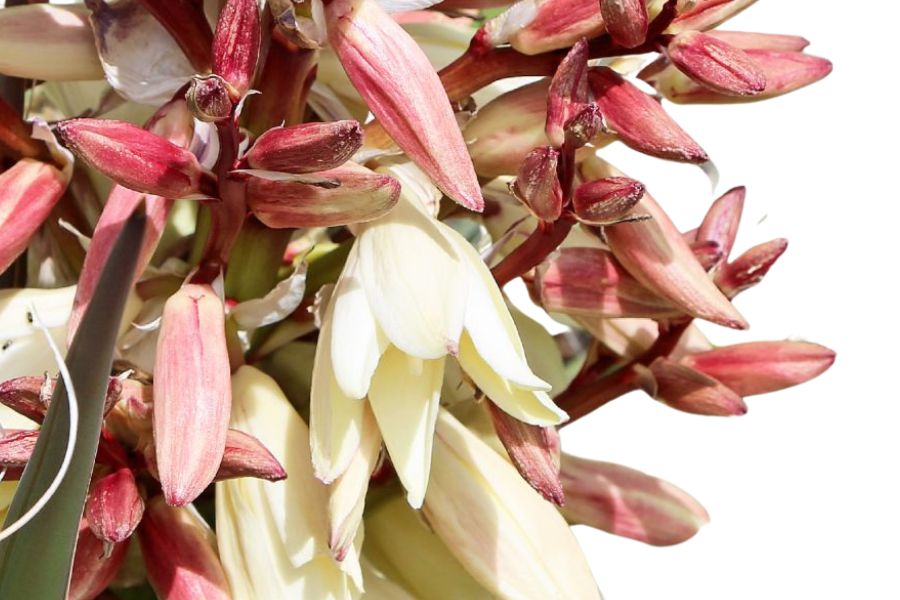Nevada offers more than its famous gold mines and casinos. Its diverse landscapes hide natural treasures you can collect and even eat. From pine nuts to wild mushrooms, the state’s mountains and valleys provide free food for those who know where to look.
Foraging connects you to nature in a special way. You learn about native plants while finding fresh ingredients that grocery stores rarely sell. Many Nevada families have passed down foraging knowledge through generations.
Desert plants might seem tough and inedible, but many serve as food and medicine. The Great Basin Desert contains unique plants that have adapted to harsh conditions. These plants often pack more flavor and nutrients than their store-bought relatives.
Mountain areas offer different foraging opportunities throughout the year. Spring brings tender greens and wild onions. Summer and fall reward foragers with berries, seeds, and nuts. Even winter reveals certain edible roots for those willing to dig.
Responsible foraging means taking only what you need. Learning proper identification prevents mistakes with similar-looking toxic plants. With a good guide and some local knowledge, you can safely enjoy Nevada’s wild bounty.
What We Cover In This Article:
- What Makes Foreageables Valuable
- Foraging Mistakes That Cost You Big Bucks
- The Most Valuable Forageables in the State
- Where to Find Valuable Forageables in the State
- When to Forage for Maximum Value
- The extensive local experience and understanding of our team
- Input from multiple local foragers and foraging groups
- The accessibility of the various locations
- Safety and potential hazards when collecting
- Private and public locations
- A desire to include locations for both experienced foragers and those who are just starting out
Using these weights we think we’ve put together the best list out there for just about any forager to be successful!
A Quick Reminder
Before we get into the specifics about where and how to find these plants and mushrooms, we want to be clear that before ingesting any wild plant or mushroom, it should be identified with 100% certainty as edible by someone qualified and experienced in mushroom and plant identification, such as a professional mycologist or an expert forager. Misidentification can lead to serious illness or death.
All plants and mushrooms have the potential to cause severe adverse reactions in certain individuals, even death. If you are consuming wild foragables, it is crucial to cook them thoroughly and properly and only eat a small portion to test for personal tolerance. Some people may have allergies or sensitivities to specific mushrooms and plants, even if they are considered safe for others.
The information provided in this article is for general informational and educational purposes only. Foraging involves inherent risks.
What Makes Foreageables Valuable
Some wild plants, mushrooms, and natural ingredients can be surprisingly valuable. Whether you’re selling them or using them at home, their worth often comes down to a few key things:
The Scarcer the Plant, the Higher the Demand
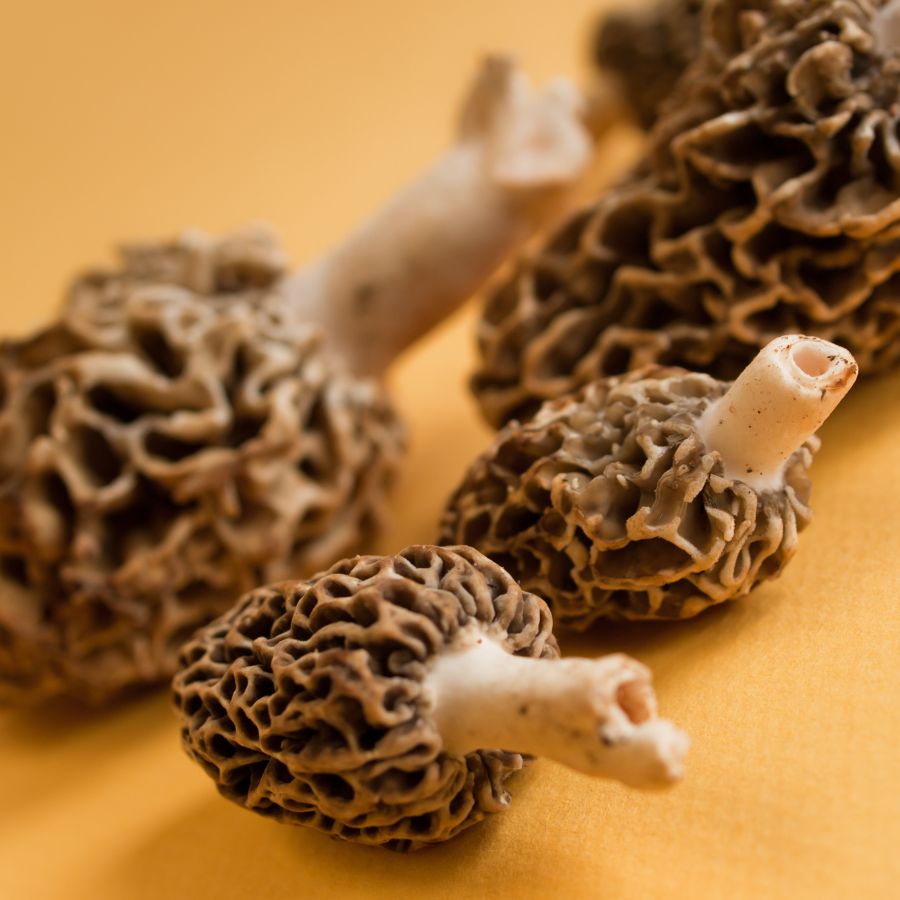
Some valuable forageables only show up for a short time each year, grow in hard-to-reach areas, or are very difficult to cultivate. That kind of rarity makes them harder to find and more expensive to buy.
Morels, truffles, and ramps are all good examples of this. They’re popular, but limited access and short growing seasons mean people are often willing to pay more.
A good seasonal foods guide can help you keep track of when high-value items appear.
High-End Dishes Boost the Value of Ingredients
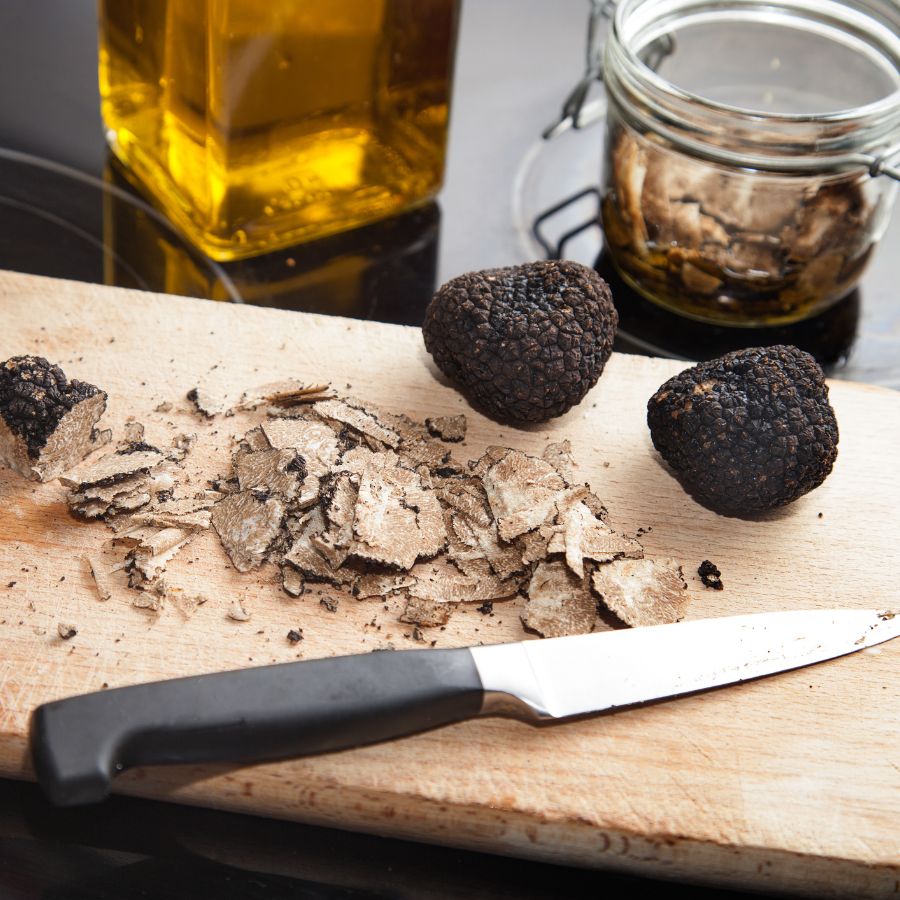
Wild ingredients that are hard to find in stores often catch the attention of chefs and home cooks. When something unique adds flavor or flair to a dish, it quickly becomes more valuable.
Truffles, wild leeks, and edible flowers are prized for how they taste and look on a plate. As more people try to include them in special meals, the demand—and the price—tends to rise.
You’ll find many of these among easy-to-identify wild mushrooms or herbs featured in fine dining.
Medicinal and Practical Uses Drive Forageable Prices Up
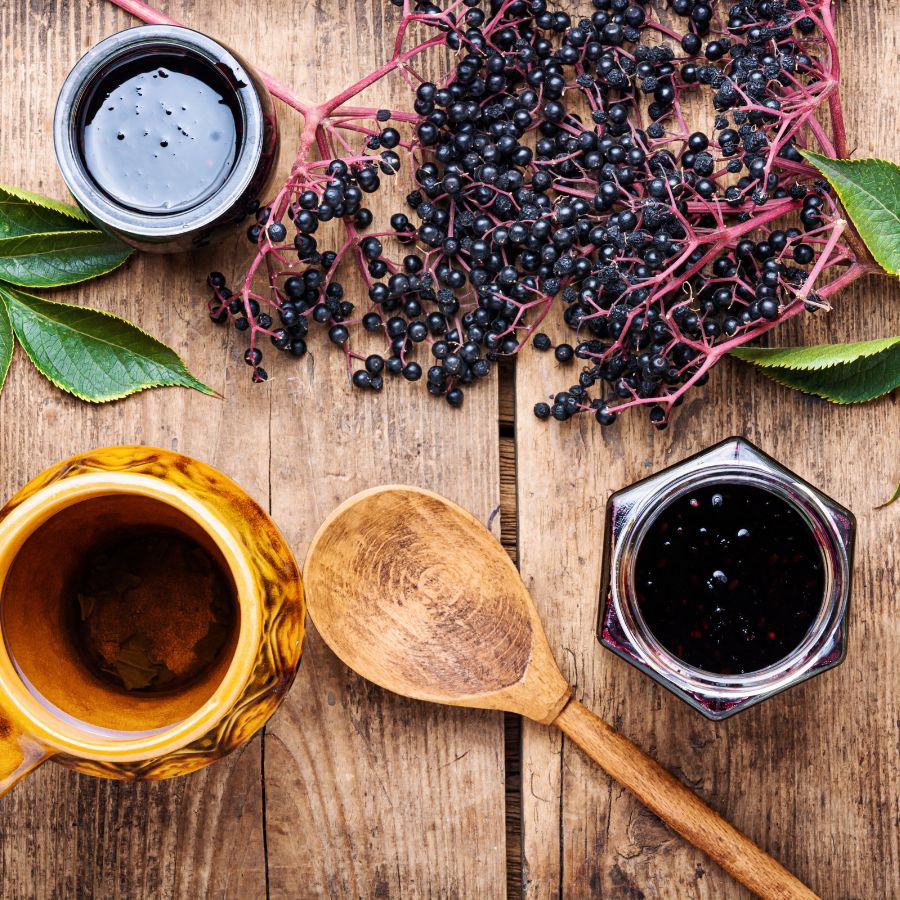
Plants like ginseng, goldenseal, and elderberries are often used in teas, tinctures, and home remedies. Their value comes from how they support wellness and are used repeatedly over time.
These plants are not just ingredients for cooking. Because people turn to them for ongoing use, the demand stays steady and the price stays high.
The More Work It Takes to Harvest, the More It’s Worth
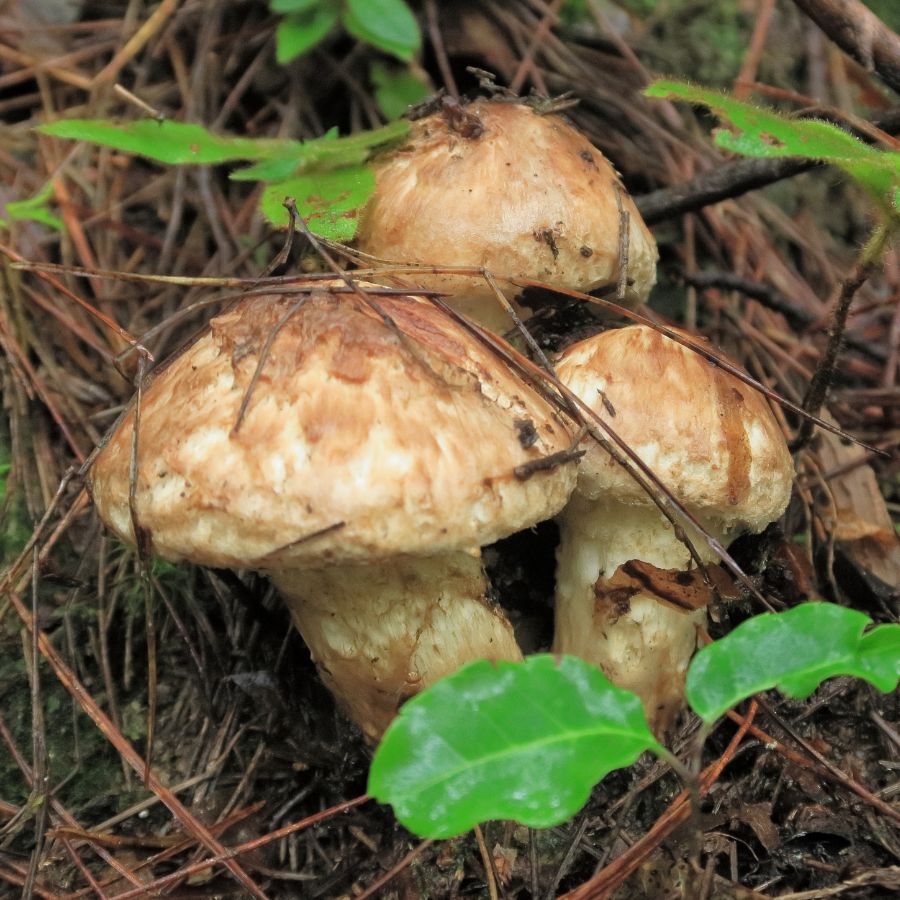
Forageables that are hard to reach or tricky to harvest often end up being more valuable. Some grow in dense forests, need careful digging, or have to be cleaned and prepared before use.
Matsutake mushrooms are a good example, because they grow in specific forest conditions and are hard to spot under layers of leaf litter. Wild ginger and black walnuts, meanwhile, both require extra steps for cleaning and preparation before they can be used or sold.
All of that takes time, effort, and experience. When something takes real work to gather safely, buyers are usually willing to pay more for it.
Foods That Keep Well Are More Valuable to Buyers
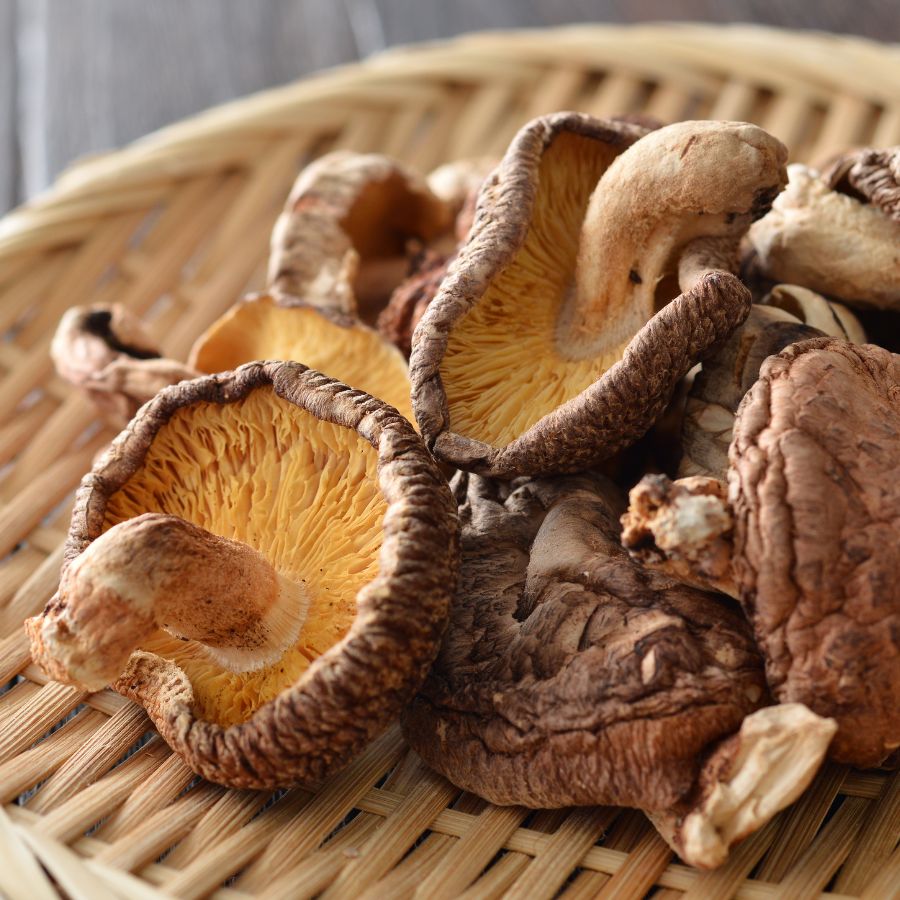
Some forageables, like dried morels or elderberries, can be stored for months without losing their value. These longer-lasting items are easier to sell and often bring in more money over time.
Others, like wild greens or edible flowers, have a short shelf life and need to be used quickly. Many easy-to-identify wild greens and herbs are best when fresh, but can be dried or preserved to extend their usefulness.
A Quick Reminder
Before we get into the specifics about where and how to find these mushrooms, we want to be clear that before ingesting any wild mushroom, it should be identified with 100% certainty as edible by someone qualified and experienced in mushroom identification, such as a professional mycologist or an expert forager. Misidentification of mushrooms can lead to serious illness or death.
All mushrooms have the potential to cause severe adverse reactions in certain individuals, even death. If you are consuming mushrooms, it is crucial to cook them thoroughly and properly and only eat a small portion to test for personal tolerance. Some people may have allergies or sensitivities to specific mushrooms, even if they are considered safe for others.
The information provided in this article is for general informational and educational purposes only. Foraging for wild mushrooms involves inherent risks.
Foraging Mistakes That Cost You Big Bucks
When you’re foraging for high-value plants, mushrooms, or other wild ingredients, every decision matters. Whether you’re selling at a farmers market or stocking your own pantry, simple mistakes can make your harvest less valuable or even completely worthless.
Harvesting at the Wrong Time
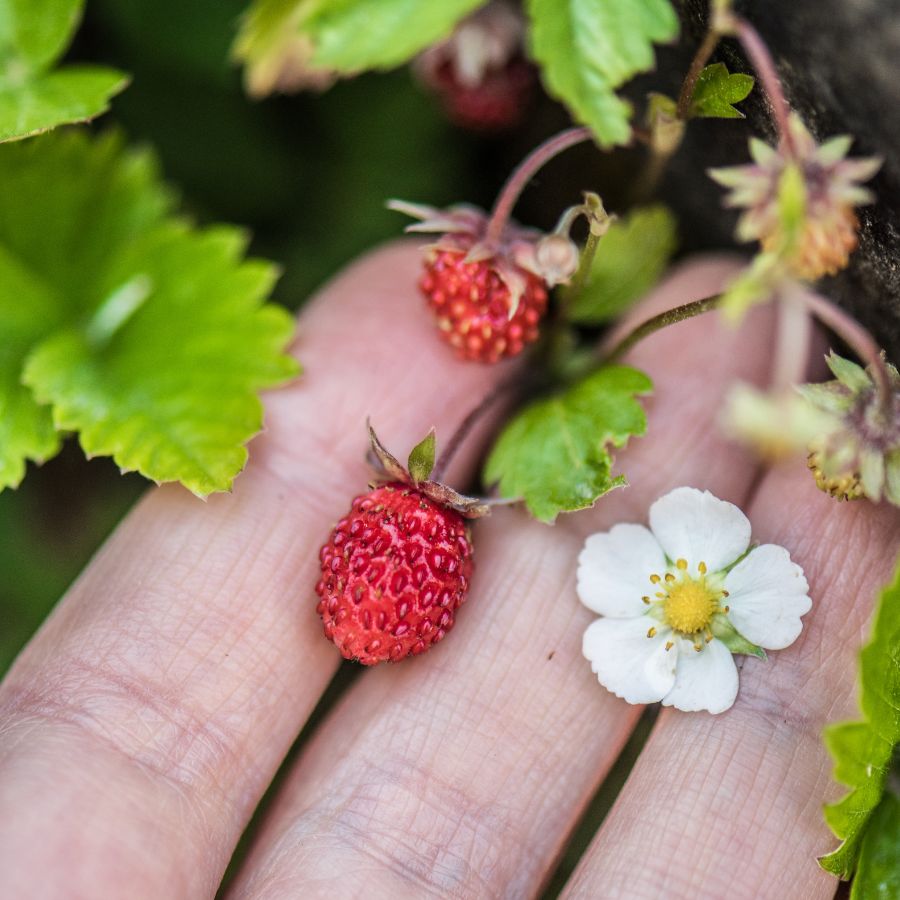
Harvesting at the wrong time can turn a valuable find into something no one wants. Plants and mushrooms have a short window when they’re at their best, and missing it means losing quality.
Morels, for example, shrink and dry out quickly once they mature, which lowers their weight and price. Overripe berries bruise in the basket and spoil fast, making them hard to store or sell.
Improper Handling After Harvest
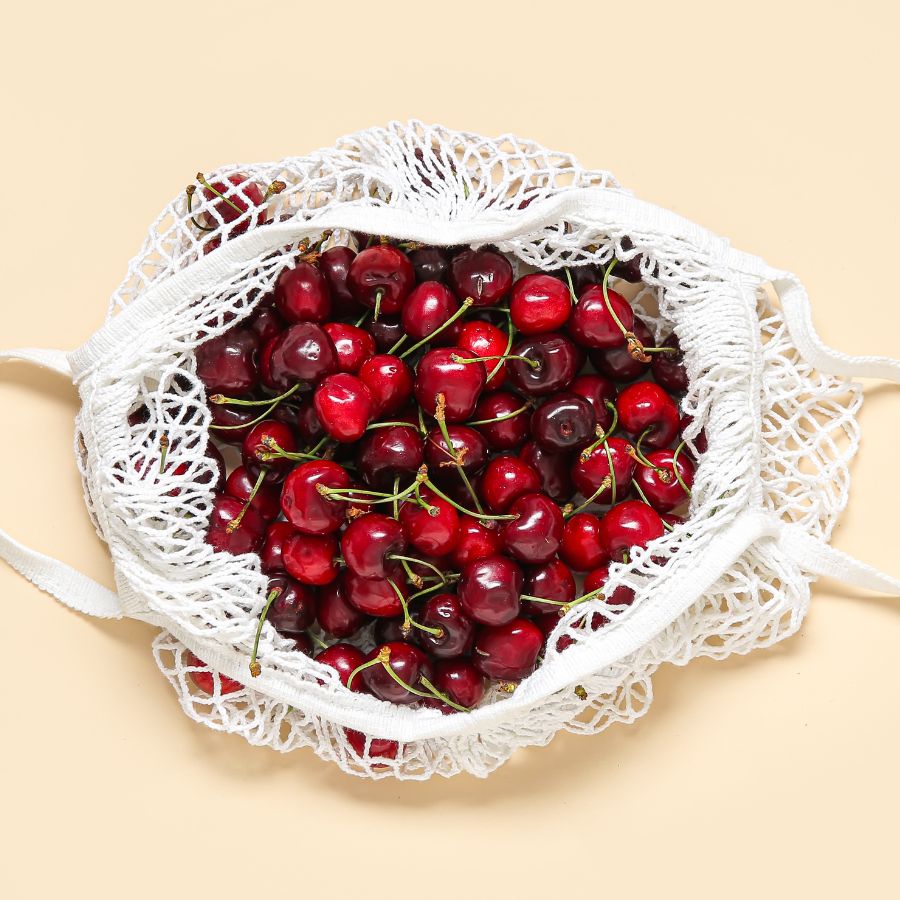
Rough handling can ruin even the most valuable forageables. Crushed mushrooms, wilted greens, and dirty roots lose both their appeal and their price.
Use baskets or mesh bags to keep things from getting smashed and let air circulate. Keeping everything cool and clean helps your harvest stay fresh and look better for longer.
This is especially important for delicate items like wild roots and tubers that need to stay clean and intact.
Skipping Processing Steps
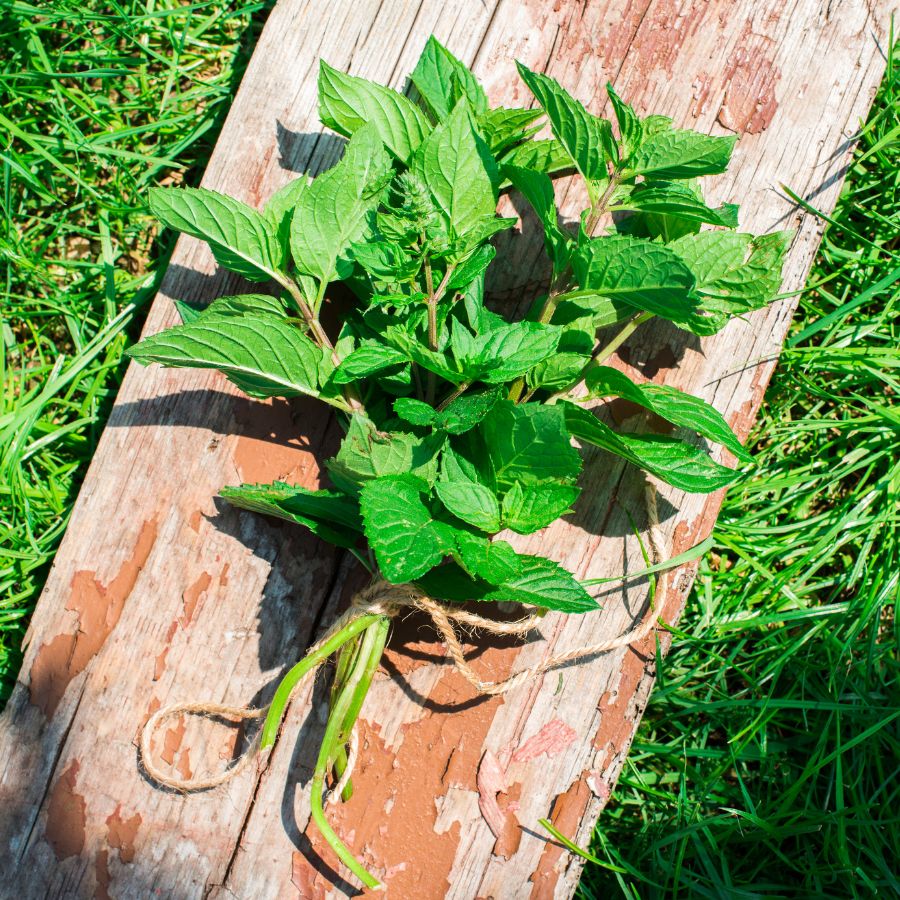
Skipping basic processing steps can cost you money. A raw harvest may look messy, spoil faster, or be harder to use.
For example, chaga is much more valuable when dried and cut properly. Herbs like wild mint or nettle often sell better when bundled neatly or partially dried. If you skip these steps, you may end up with something that looks unappealing or spoils quickly.
Collecting from the Wrong Area
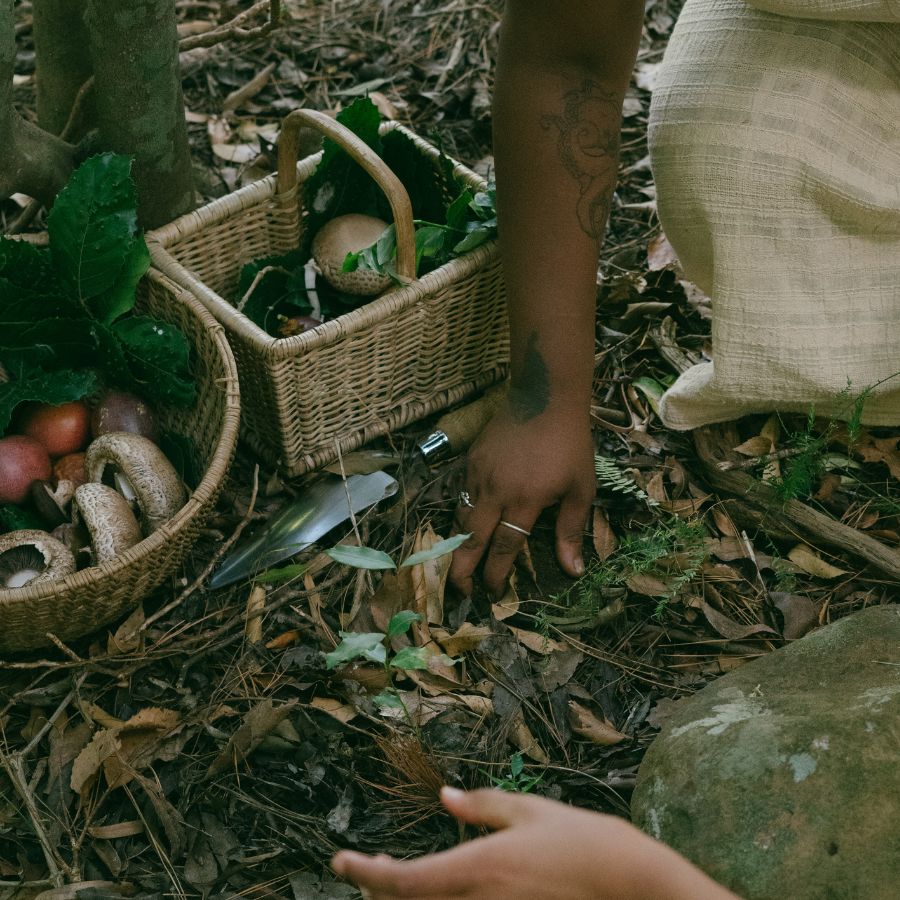
Harvesting in the wrong place can ruin a good find. Plants and mushrooms pulled from roadsides or polluted ground may be unsafe, no matter how fresh they look.
Buyers want to know their food comes from clean, responsible sources. If a spot is known for overharvesting or damage, it can make the whole batch less appealing.
These suburbia foraging tips can help you find overlooked spots that are surprisingly safe and productive.
Not Knowing the Market
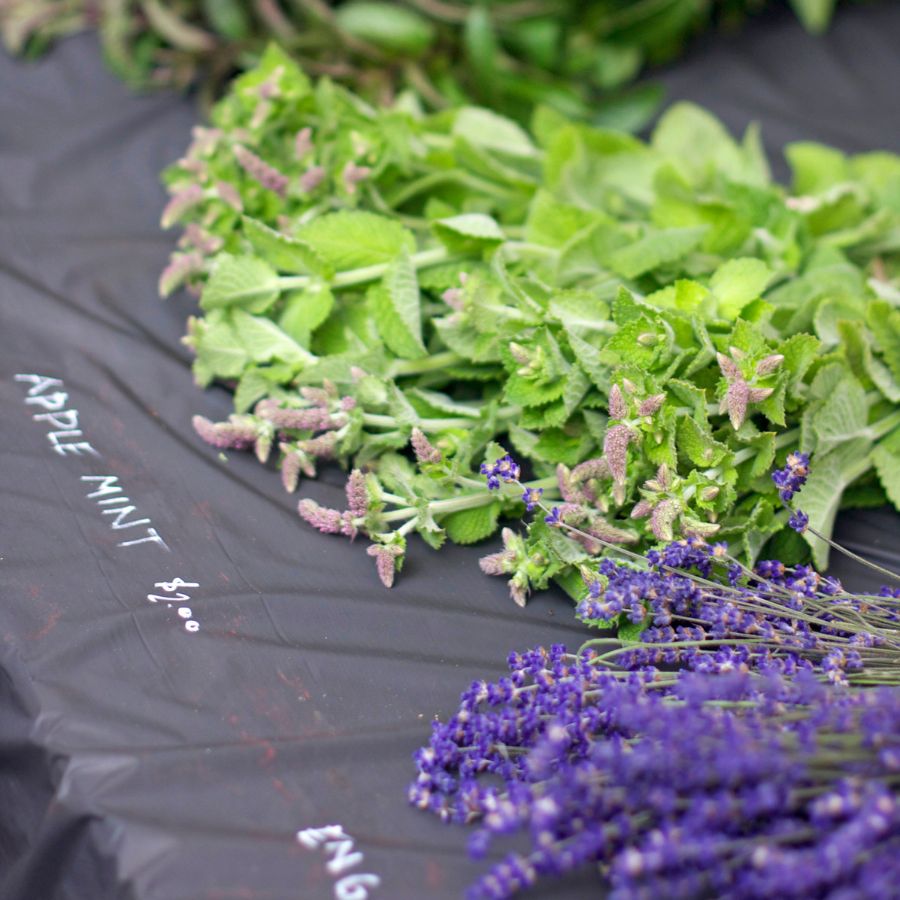
A rare plant isn’t valuable if nobody wants to buy it. If you gather in-demand species like wild ramps or black trumpets, you’re more likely to make a profit. Pay attention to what chefs, herbalists, or vendors are actually looking for.
Foraging with no plan leads to wasted effort and unsold stock. Keeping up with demand helps you bring home a profit instead of a pile of leftovers.
You can also brush up on foraging for survival strategies to identify the most versatile and useful wild foods.
Before you head out
Before embarking on any foraging activities, it is essential to understand and follow local laws and guidelines. Always confirm that you have permission to access any land and obtain permission from landowners if you are foraging on private property. Trespassing or foraging without permission is illegal and disrespectful.
For public lands, familiarize yourself with the foraging regulations, as some areas may restrict or prohibit the collection of mushrooms or other wild foods. These regulations and laws are frequently changing so always verify them before heading out to hunt. What we have listed below may be out of date and inaccurate as a result.
The Most Valuable Forageables in the State
Some of the most sought-after wild plants and fungi here can be surprisingly valuable. Whether you’re foraging for profit or personal use, these are the ones worth paying attention to:
Pinyon Pine Nuts (Pinus monophylla)
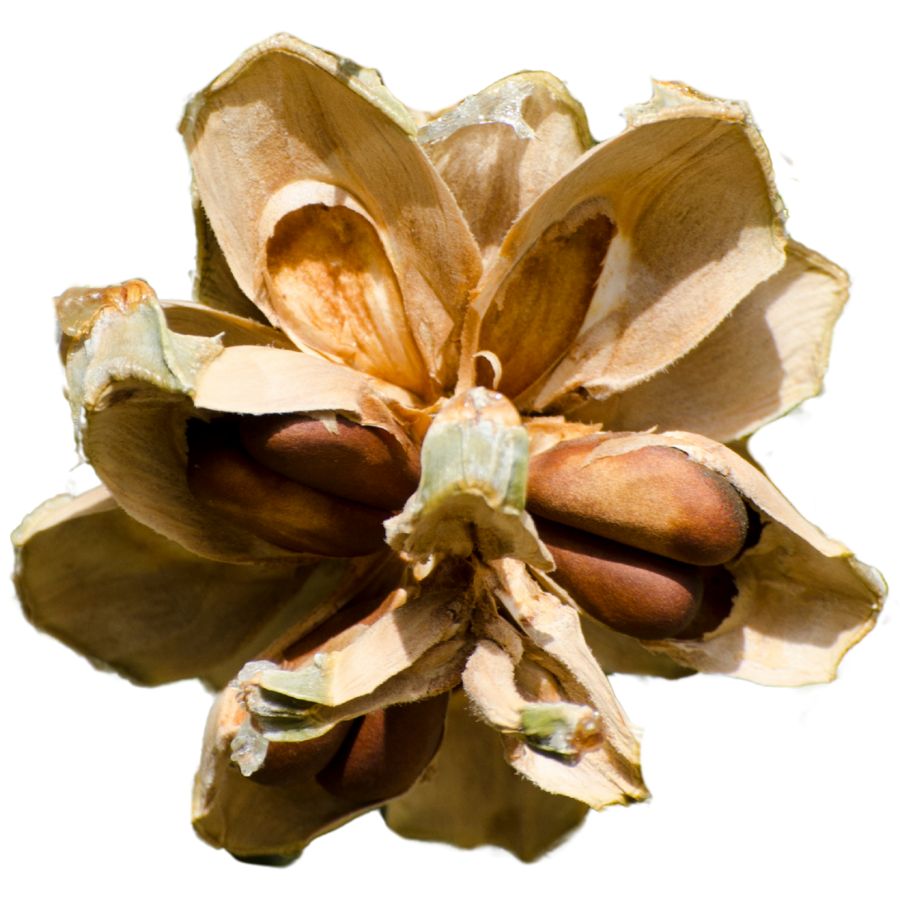
The pinyon pine, sometimes called single-leaf pinyon, is easy to spot because it has just one needle per bundle instead of the usual two or more. The tree stays small and bushy, with a rounded shape and dense clusters of short, bluish-green needles.
The pine nut hidden inside the thick-shelled cones is the only edible part of the tree, and it has a rich, buttery flavor when eaten raw or roasted. The seeds are small compared to commercial pine nuts but have a soft, slightly chewy texture that makes them easy to enjoy by the handful.
You can crack open the shells and eat the seeds fresh, toast them lightly to bring out a deeper flavor, or grind them into sauces or spreads. Only the seeds are edible, so avoid nibbling on the cones, bark, or needles, which are not considered safe to eat.
Make sure not confuse the pinyon pine with other types of pines that either do not produce edible seeds or have seeds too small to bother collecting. Single-leaf pinyon cones are larger and rounder than many other pines, and the tree’s distinctive needle pattern helps make a positive ID.
Desert Truffles (Terfezia spp.)

Hidden beneath desert soils, these round fungi look like small potatoes with light brown outer skin. When cut open, they reveal a marbled interior that ranges from white to light purple. Desert truffles have a mild, earthy taste that many people compare to nuts.
You can find them growing near certain desert shrubs after rainy periods. The entire truffle is safe to eat and can be sliced and cooked in many ways.
Unlike poisonous mushrooms, desert truffles have solid interiors without gills. They’re completely safe when properly identified.
Traditional desert communities have hunted these valuable fungi for thousands of years. They watch for small cracks in the ground that show where truffles grow underneath.
These truffles cost a lot in markets because they’re hard to find and can’t be farmed. They contain good nutrients including protein and minerals that are hard to find in desert environments.
Wild Rhubarb (Rumex hymenosepalus)
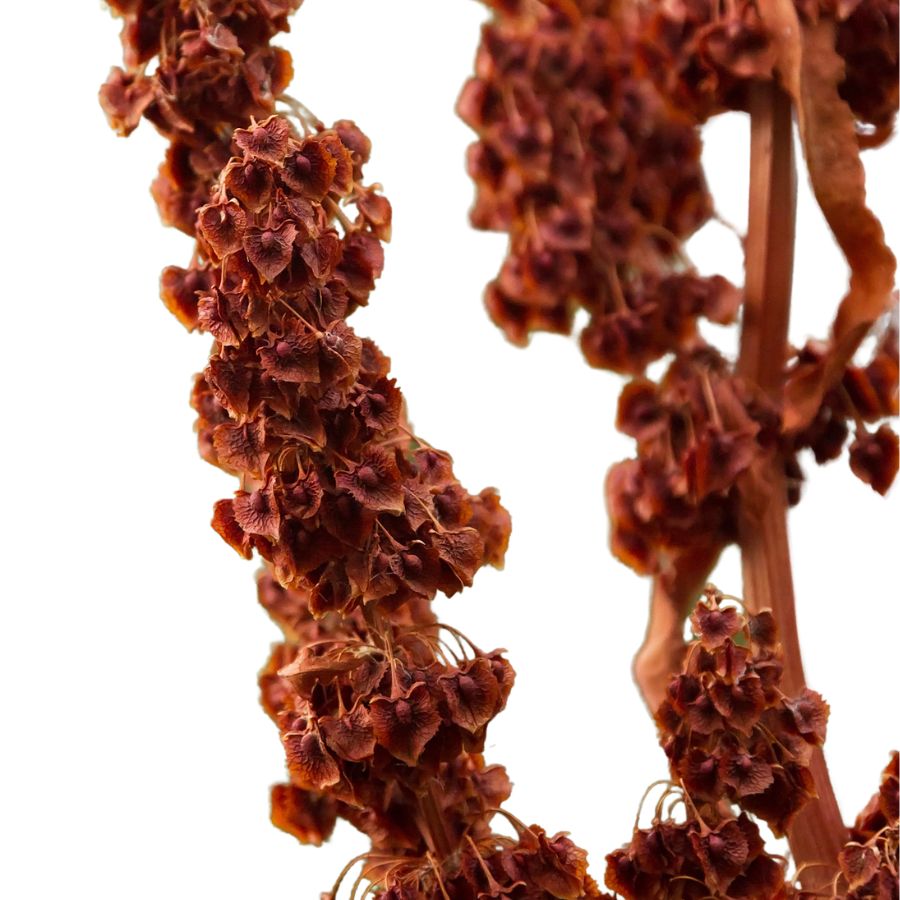
The reddish stems of wild rhubarb stand out against sandy desert soils where they grow. This plant has large, pointed leaves on top of thick stalks that can grow up to three feet tall.
Never eat the leaves of wild rhubarb – they contain harmful substances. Only the stalks are safe to eat, and they taste sour like regular garden rhubarb.
Native American tribes used wild rhubarb not just for food but also as medicine and to make red-brown dye. The roots were used to tan animal hides because they contain special compounds called tannins.
You can cook the stalks with sugar to make tasty sauces, jams, and pies. The plant is often found in sandy washes and along streams in western parts of North America.
Foragers value wild rhubarb because it provides both food and useful materials from a single plant in places where resources are limited.
Tansy Mustard (Descurainia pinnata)
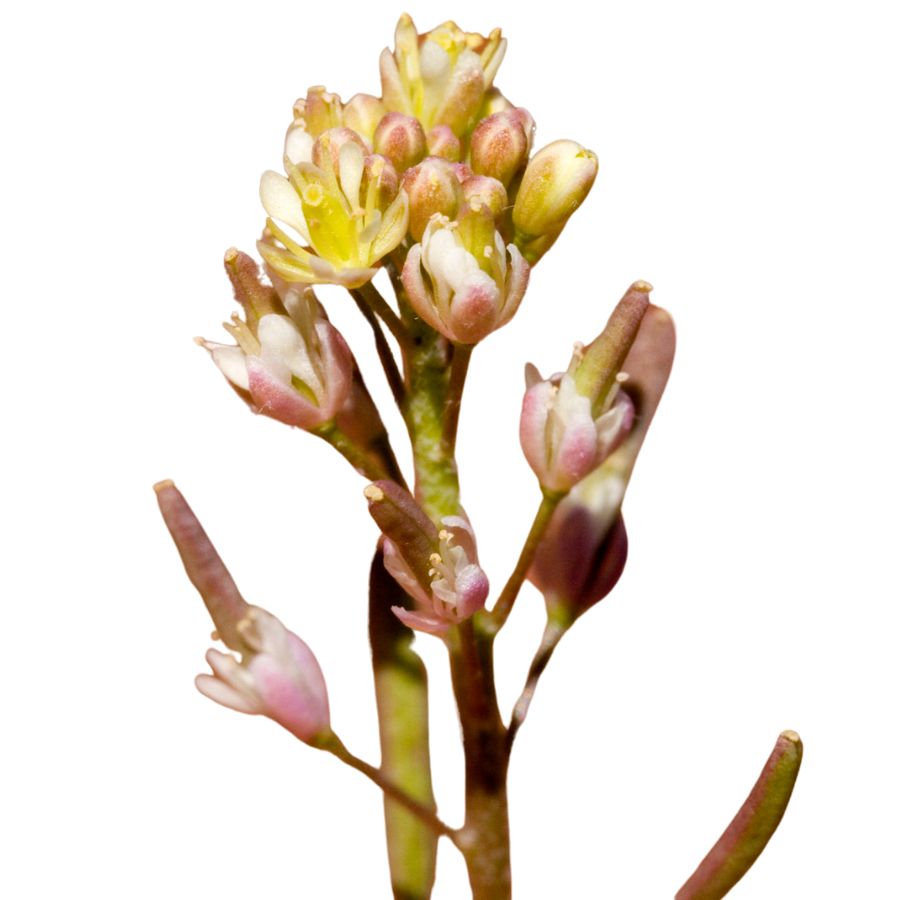
The slender, upright stems and finely divided leaves of tansy mustard give it a lacy appearance, and its tiny yellow flowers appear in loose clusters near the top. The plant is edible primarily for its young leaves and seeds, which have culinary uses when handled properly.
It tastes sharp and spicy, similar to arugula or radish tops, and the texture is tender when harvested early. The leaves can be chopped into soups or stir-fries, while the seeds can be dried and crushed like mustard powder.
False pennycress is one plant that people mistake for tansy mustard, but it has rounded seed pods and smoother leaves. Crushed leaves of tansy mustard release a faint mustard smell, which its lookalikes typically don’t.
Be careful not to overconsume it raw, as it contains glucosinolates that may cause stomach upset in large amounts. Cooking reduces this risk and brings out a more mellow flavor.
Indian Ricegrass Seeds (Achnatherum hymenoides)
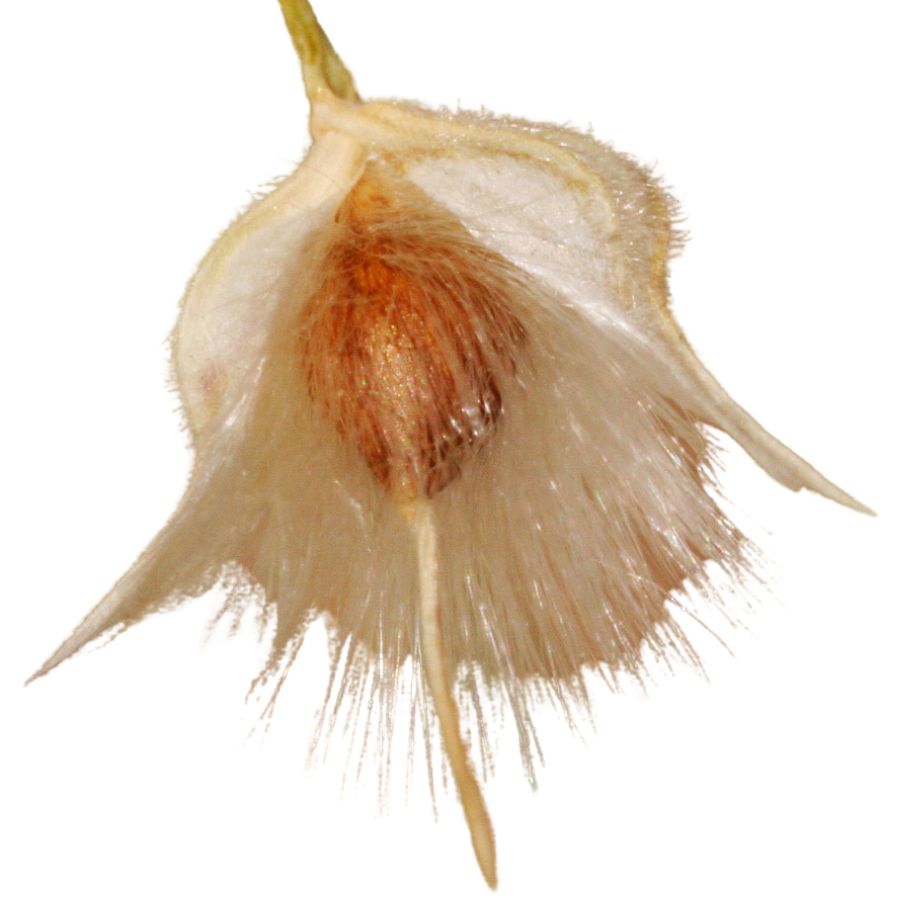
This grass grows in bunches across dry western lands, producing tiny black seeds that blow in the wind. Native American tribes relied on these small but mighty seeds as a main food source for centuries.
The seeds taste nutty when cooked and can be prepared like rice or ground into flour for bread. They’re packed with energy, protein, and fiber – perfect trail food for desert travelers.
You can spot Indian ricegrass by its airy seed heads that spread out in all directions from the stem. The grass stands about knee-high with thin, curly leaves.
Collecting the seeds takes time because they ripen at different rates. Traditional gatherers used special baskets to capture the seeds by gently hitting mature seed heads.
No poisonous grasses look similar to Indian ricegrass, making it a safe choice for beginning foragers. The seeds remain an important cultural food for many indigenous communities today.
Tulip Prickly Pear Cactus (Opuntia phaeacantha)
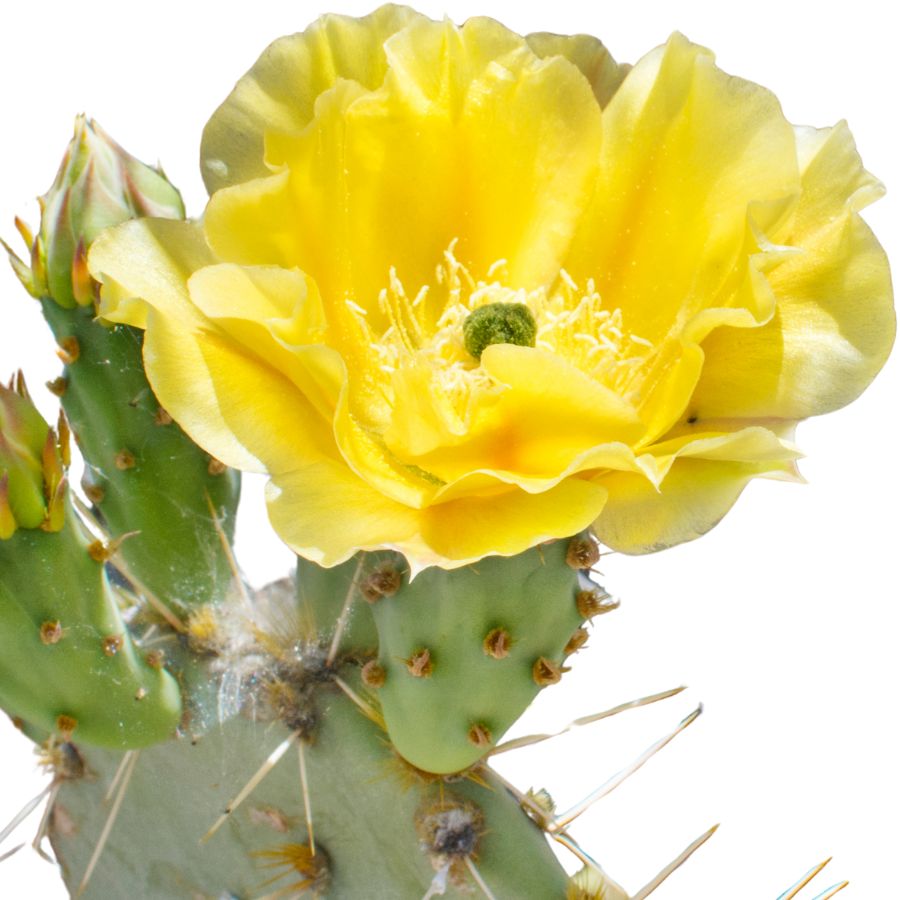
Tulip prickly pear cactus pads are green, oval, and covered with clusters of long reddish spines, and its large yellow-to-orange flowers help distinguish it from less palatable relatives. Both the pads and the fruits are edible, but you must clean them thoroughly to remove all spines and glochids.
When prepared properly, the pads have a crisp texture with a tart, lemony taste, while the fruit is sweet and juicy with a flavor similar to melon. You can grill the pads with oil and spices or boil them to add to stews and tacos, while the fruit is often peeled and eaten raw or used in jams.
Other prickly pears might look similar but have woody or overly mucilaginous pads that don’t cook down well or taste bitter. The tulip variety has smoother flesh and fewer interior fibers when harvested at the right size.
Never eat any part of the cactus raw without removing the glochids, which are tiny, hair-like spines that can embed painfully in your skin and mouth. The interior flesh is edible, but the peel and spines should be discarded completely.
Groundnut (Apios Americana)

Groundnut is also called potato bean or Indian potato, and it grows as a climbing vine with clusters of pinkish-purple flowers. The part most people go for is the underground tuber, which looks a bit like a small, knobby chain of beads.
The flavor is richer than a regular potato, with a nutty, earthy taste and a dense, almost chestnut-like texture when cooked. It holds up well in soups and stews, or you can boil and mash it like a root vegetable.
Some people slice it thin and roast it until crisp, while others slow-cook it to bring out a sweeter taste. The vine also produces beans, but the root is what’s usually eaten.
There are a few vines that resemble groundnut, but many of those don’t have the same distinctive flower clusters or tend to lack the beadlike roots. Always make sure you’re digging up the right plant before cooking it.
Sweetroot (Osmorhiza occidentalis)

The moment you dig up sweetroot, you’ll notice its strong licorice smell. This forest plant has feathery leaves like a carrot top and grows in shady mountain areas across the western United States.
Sweetroot’s slender roots can be eaten raw as a sweet treat or added to soups for flavor. Early settlers and Native Americans chewed the roots to freshen their breath or treat stomach problems.
Be very careful when collecting this plant. It belongs to the same family as deadly poison hemlock. Always check that your plant has a sweet licorice smell – poison hemlock smells bad or has no smell.
The white flower clusters appear in early summer, growing in umbrella-shaped groups. Sweetroot prefers cooler mountain forests where it grows in patches near trees.
Modern foragers enjoy sweetroot as a natural candy substitute and use it to add unique flavor to wilderness cooking. The best roots come from plants growing in rich, moist soil.
Desert Wild Grapes (Vitis girdiana)
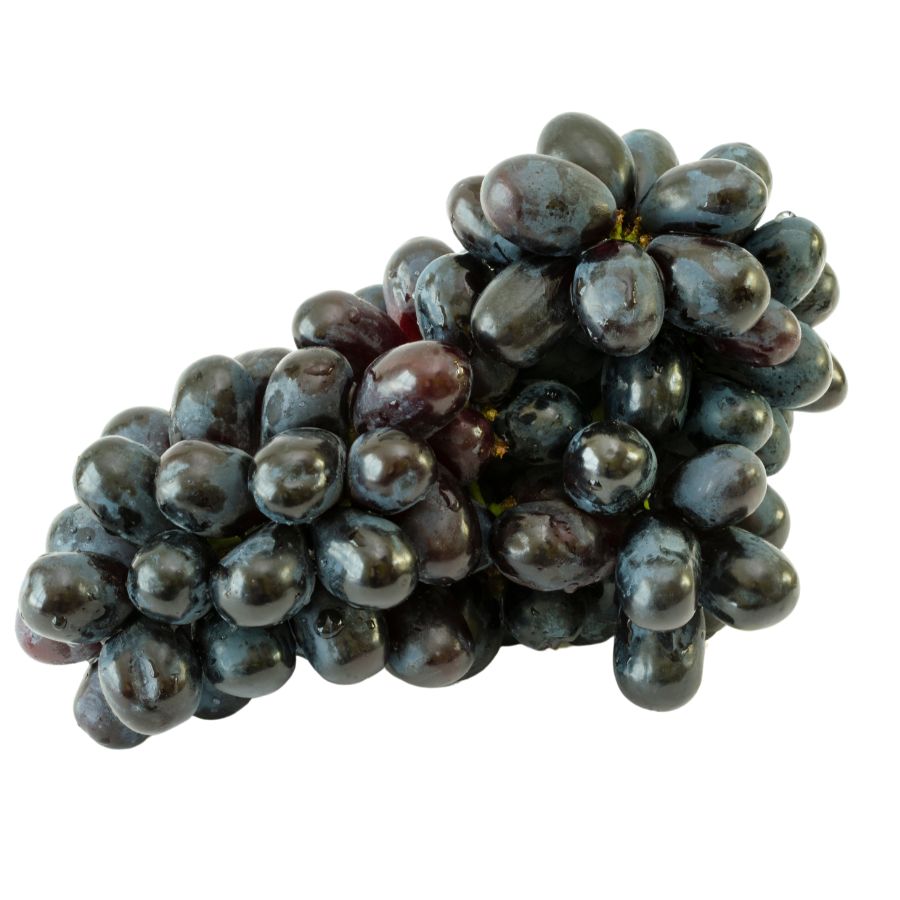
Small clusters of purple-black grapes hang from woody vines that climb through desert canyons and along streams. These native grapes are smaller than store-bought varieties but pack much more flavor in each tiny fruit.
The grapes taste both sweet and tart, making them perfect for jams and jellies. You can eat them fresh too, though they have more seeds than cultivated grapes.
Desert wild grape vines climb using curly tendrils and have distinctive lobed leaves that look similar to maple leaves. They always grow near water sources, even in the driest deserts.
Young grape leaves can be stuffed with rice or meat mixtures, just like in Greek cooking. Even the tender spring vine tips are edible when cooked briefly.
These grapes have sustained wildlife and humans in harsh desert environments for thousands of years. No poisonous berries look like these grapes, and the distinctive leaf shape makes them easy to identify even for beginners.
Fernleaf Lomatium (Lomatium dissectum)
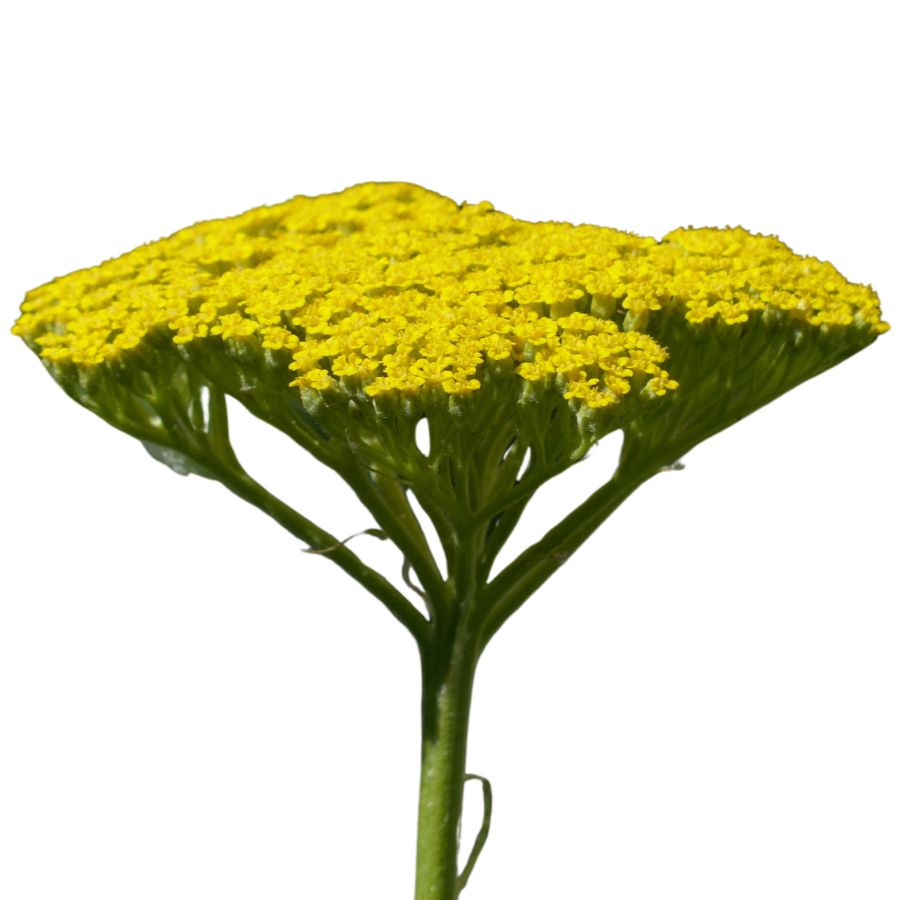
Fernleaf Lomatium grows up to 5 feet tall with feathery, fern-like leaves that give it its common name. Native to western North America, it produces umbrella-shaped clusters of tiny yellow flowers in spring, followed by flat, oval seeds.
The root is the edible part, containing a rich concentration of compounds valued for their immune-supporting properties. When harvested, the root has a strong earthy aroma that softens when cooked.
Many indigenous peoples traditionally used this plant for respiratory ailments and as a food source. When foraging, look for the distinctive divided leaves and hollow stems that distinguish it from toxic look-alikes in the carrot family.
Fernleaf Lomatium prefers dry, rocky slopes in mountain regions. The root can be dried and powdered for medicinal teas or cooked in soups where it adds a mild celery-like flavor.
Banana Yucca Fruit (Yucca baccata)

The banana-shaped fruits of this desert plant grow in clusters near the center of spiky rosettes. Each green fruit, 3-6 inches long, turns from green to brown-black when ripe, with a sweet, date-like flavor and banana-like texture.
Banana Yucca is identified by its rigid, blue-green leaves with curling white fibers along the edges. The plant produces dramatic white flower stalks before setting fruit.
These nutritious fruits can be eaten raw when fully ripe or roasted to enhance sweetness. The flesh contains numerous black seeds that are edible but often removed.
Native Americans valued this plant not only for food but also for fiber, using the tough leaves for basketry and cordage. Foragers should wear gloves when collecting, as the sharp leaf tips can cause painful punctures.
When gathering, choose fruits that yield slightly to pressure, indicating ripeness.
Chokecherries (Prunus virginiana)
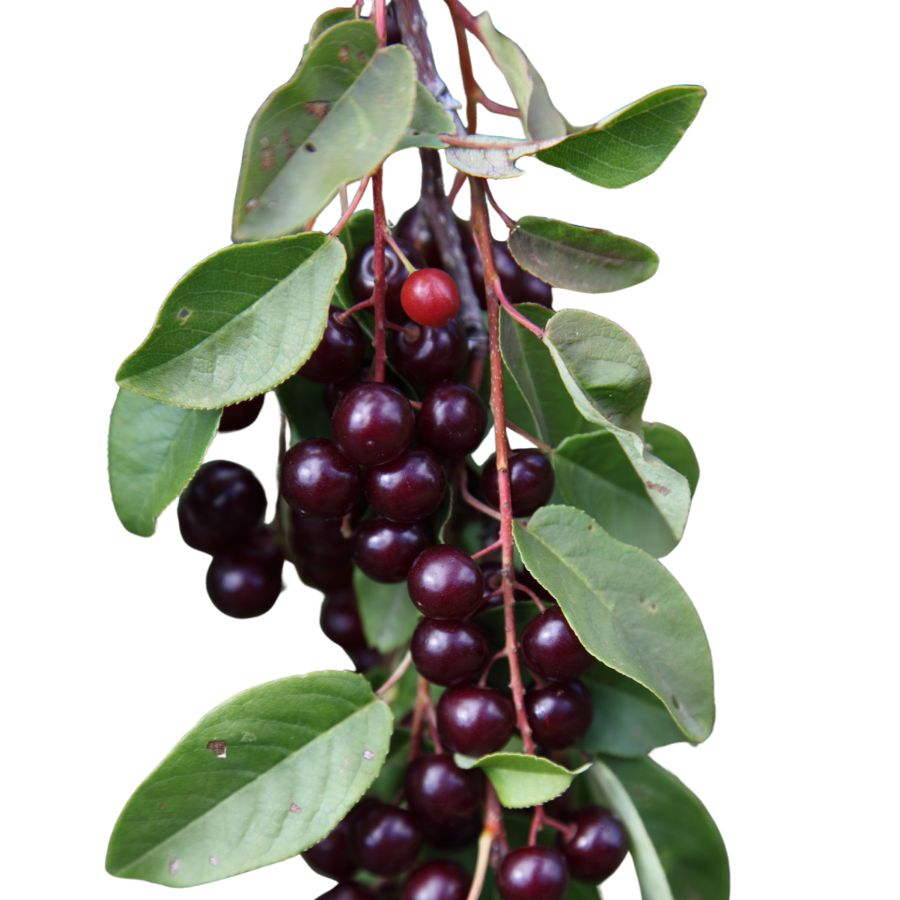
Clusters of dark berries hanging from a woody shrub usually indicate chokecherries, especially when the leaves are oval with finely toothed edges. These berries turn from red to deep purple or black when they’re ready to eat.
Chokecherries are rarely eaten raw due to their bitterness, but they shine in cooked recipes like preserves, sauces, or even homemade wine. Boiling the fruit and straining it helps separate the pulp from the inedible seeds.
It’s easy to mix up chokecherries with other wild cherries, but true chokecherries have longer, narrower leaves and a more astringent taste. Avoid anything with rounder, solitary berries or a sweet scent without the signature tartness.
Their texture is slightly gritty around the pit, and the flavor improves significantly with sugar and heat. A strong astringent quality dominates the raw berry, but the processed pulp becomes rich and deeply flavored.
Wild Mint (Mentha arvensis)

You’re probably familiar with the strong scent of wild mint, which comes from the essential oils concentrated in its leaves. It has square stems, lance-shaped leaves with slightly toothed edges, and pale lilac flower clusters.
The fresh leaves can be eaten raw, cooked into soups, or muddled into drinks for a crisp flavor. Expect a bright, menthol-like kick with a hint of sweetness.
False mint species like purple deadnettle grow in similar spots but lack the menthol smell and have fuzzy leaves. If the plant doesn’t smell like mint, it probably isn’t.
Stick to the leaves and younger stems for eating because the woody stalks aren’t palatable. Wild mint also holds up well when dried and stored for tea or seasoning.
Cauliflower Mushroom (Sparassis radicata)
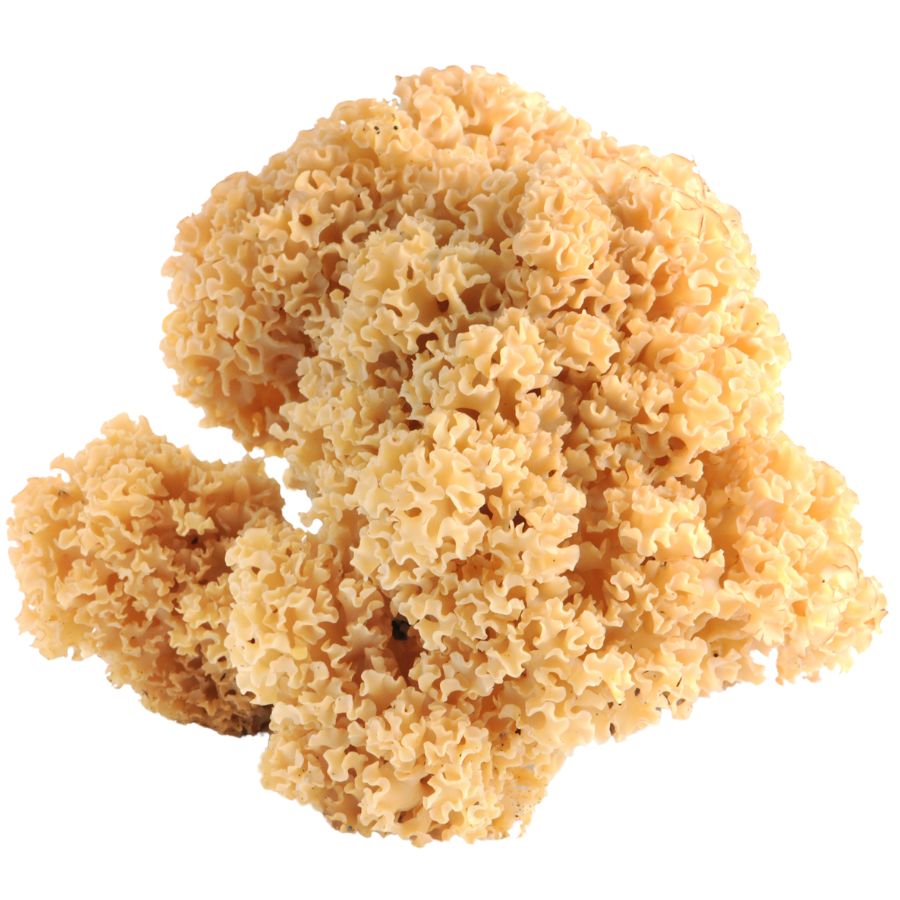
Resembling a giant cream-colored cauliflower or sea sponge, this distinctive fungus grows at the base of conifers, particularly Douglas fir trees. The frilly, wavy structure can reach 2 feet across and weigh several pounds.
Cauliflower mushrooms have no poisonous look-alikes, making them relatively safe for beginner foragers. They have a mild, nutty flavor with a slight crunch even after cooking.
When collecting, look for clean, white to cream-colored specimens without brown spots. Cut at the base rather than pulling to avoid damaging the underground mycelium.
The entire mushroom is edible but requires thorough cleaning as the ruffled structure often harbors forest debris and small insects. Slice into manageable pieces before soaking in cold water.
These fungi are prized by chefs for their ability to absorb flavors while maintaining texture in soups and stir-fries.
Wild Purslane (Portulaca oleracea)
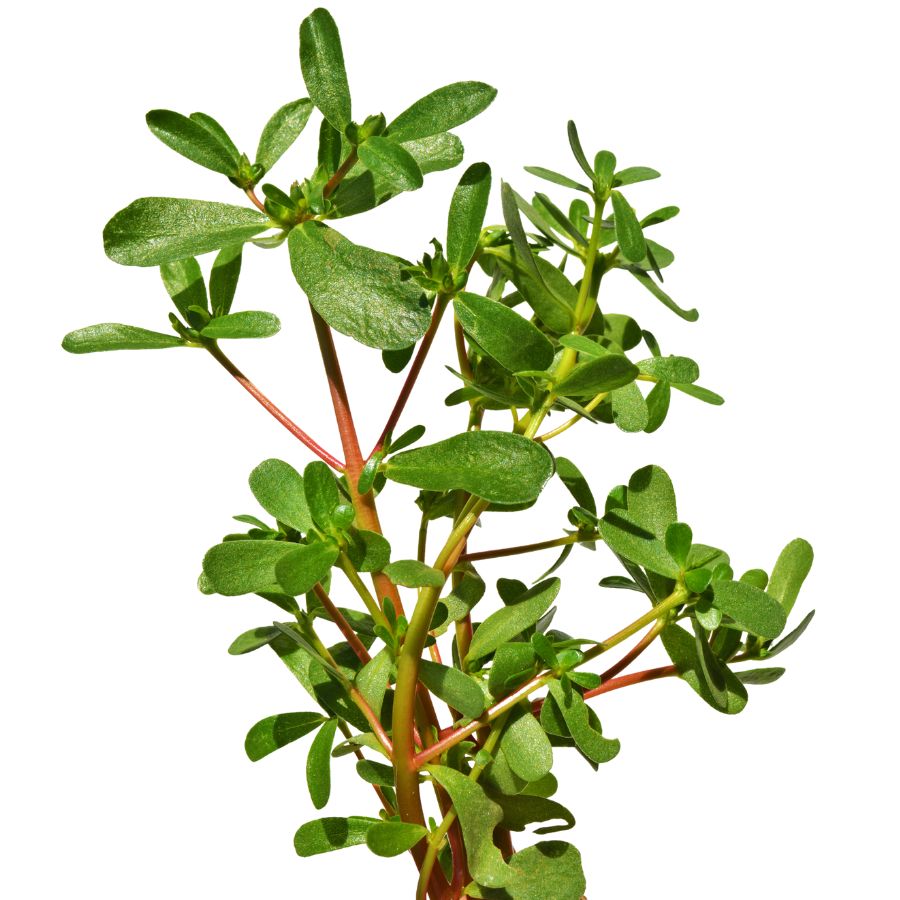
Purslane is a hardy, low-growing plant that’s also sometimes known as little hogweed or verdolaga. It has smooth, reddish stems and thick, paddle-shaped leaves that feel a bit waxy when you touch them.
The stems, leaves, and tiny yellow flowers are all edible, while the roots are not typically eaten. Purslane has a crisp texture with a slightly tart, lemony flavor that works well raw or cooked.
Some plants that look similar include spurge, which has a milky sap and is not edible, so it is important to check for purslane’s smooth, succulent stems and lack of sap. Always double-check by gently snapping a stem to make sure no white liquid appears.
You can toss fresh purslane into salads, sauté it lightly like spinach, or pickle it for later use. Its mild tartness and slight crunch make it a refreshing addition to sandwiches, soups, and even stir-fries.
Desert Almond (Prunus fasciculata)
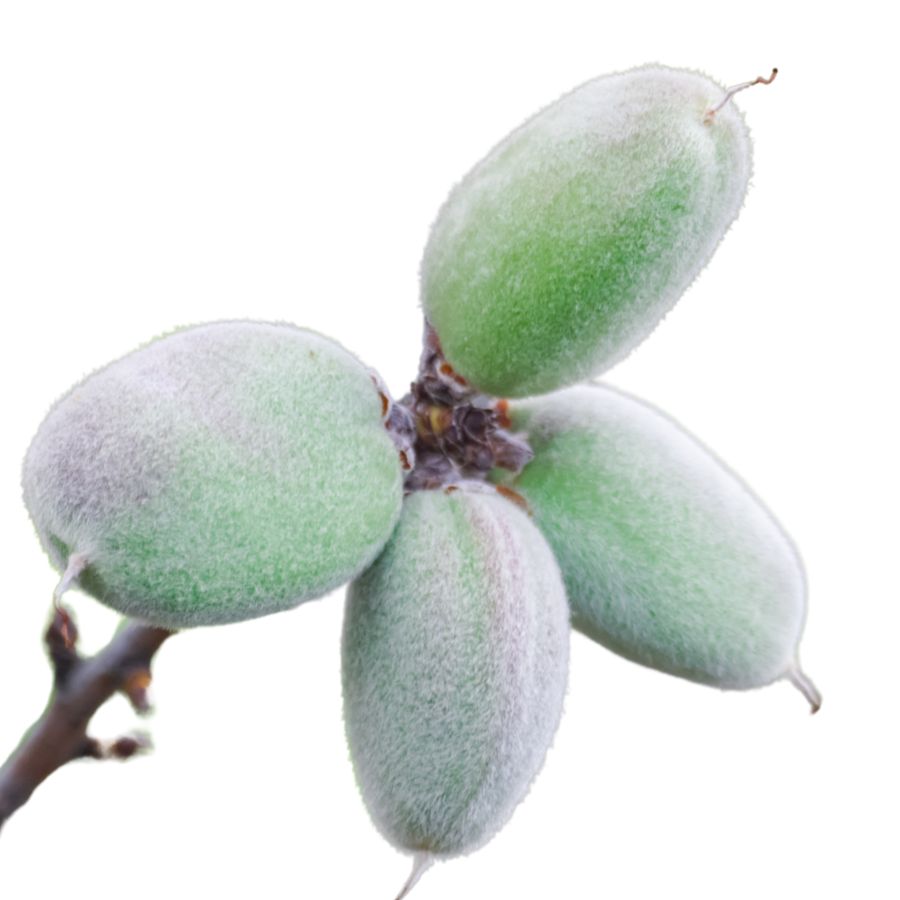
Desert Almond is a small, thorny bush that grows in dry areas of the Southwest. It has small grayish-green leaves and sharp branches that help it survive in harsh conditions. In spring, tiny white or pink flowers appear, which later turn into small, fuzzy fruits.
The most valuable part is the seed inside the fruit. This seed tastes like store-bought almonds but with a stronger, slightly bitter flavor. People who lived in these areas long ago would soak or roast the seeds to make them less bitter and more tasty.
When looking for Desert Almonds, only pick the fruits that have dried on the bush. The outer part of the fruit is too thin to eat.
These wild almonds are important because they provide protein and healthy fats in places where few other food plants grow. Remember not to eat too many raw seeds, as they need to be properly prepared to remove natural chemicals that can be harmful.
Lion’s Mane Mushroom (Hericium erinaceus)
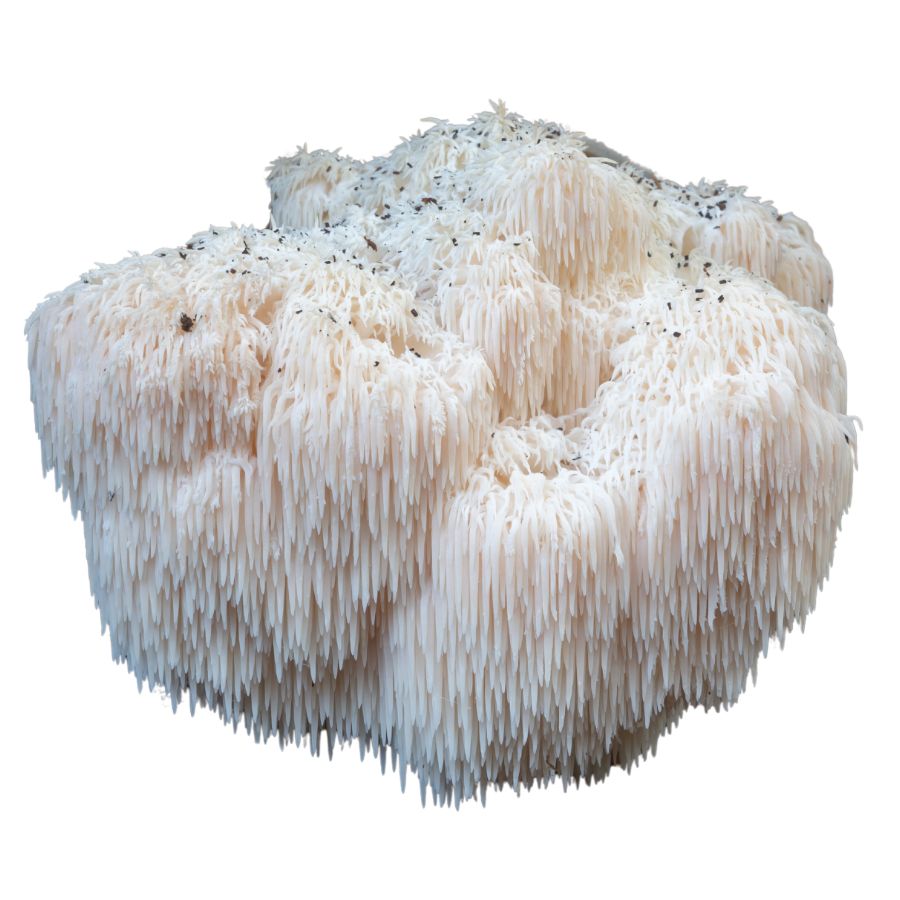
Lion’s Mane looks like a white, shaggy pom-pom growing on the sides of trees. Its long, soft spines hang down like a lion’s mane or a beard, making it easy to spot in the woods. This mushroom usually grows on hardwood trees like oak and maple.
The whole mushroom can be eaten, and many people say it tastes similar to seafood, especially crab or lobster. When you find one, check that the spines are white or cream-colored – if they’ve turned yellow-brown, the mushroom is too old.
To cook Lion’s Mane, cut it into slices and cook in a pan until the edges turn golden and crispy. It soaks up flavors well while staying firm when cooked.
Scientists have found that this mushroom might be good for brain health. This makes Lion’s Mane special not just as food but also as something that might help keep our minds healthy.
Wild Ramps (Allium tricoccum)
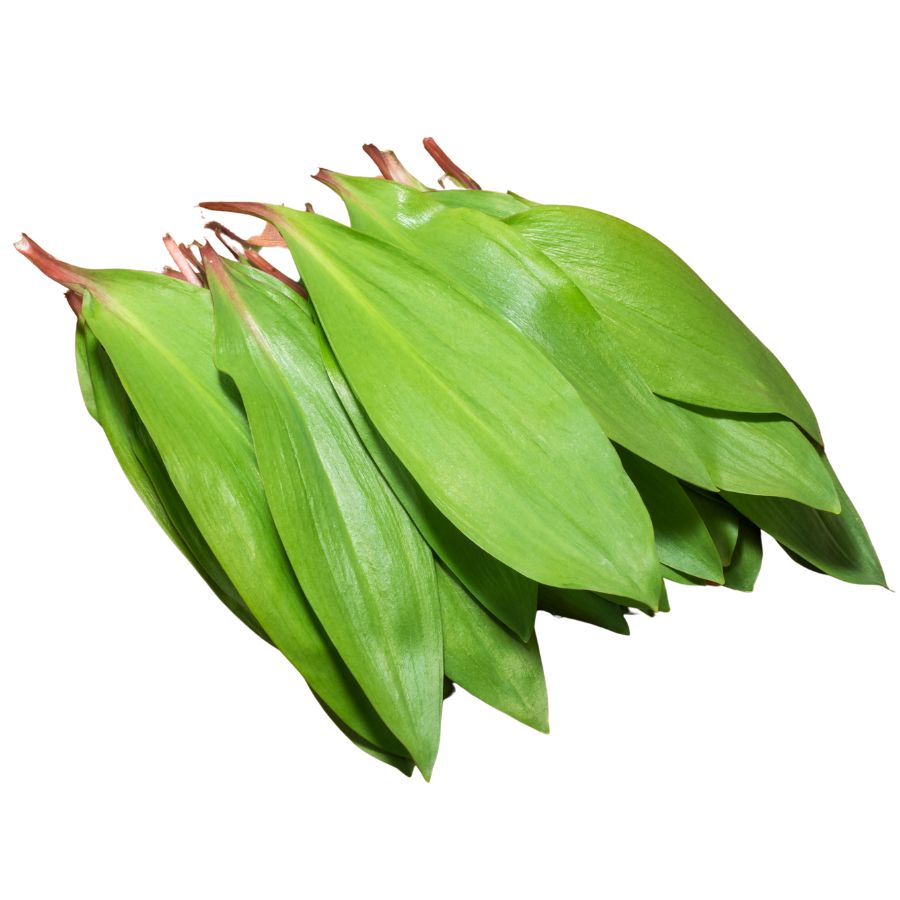
Known as wild leek, ramp, or ramson, this flavorful plant is famous for its broad green leaves and slender white stems. It grows low to the ground and gives off a strong onion-like scent when bruised, which can help you tell it apart from toxic lookalikes like lily of the valley.
If you give it a taste, you will notice a bold mix of onion and garlic flavors, with a tender texture that softens even more when cooked. People often sauté the leaves and stems, pickle the bulbs, or blend them into pestos and soups.
The entire plant can be used for cooking, but the leaves and bulbs are the most prized parts. It is important not to confuse it with similar-looking plants that do not have the signature onion smell when crushed.
Wild leek populations have declined in some areas because of overharvesting, so it is a good idea to only take a few from any given patch. When harvested thoughtfully, these vibrant greens can add a punch of flavor to just about anything you make.
Matsutake Mushroom (Tricholoma magnivelare)
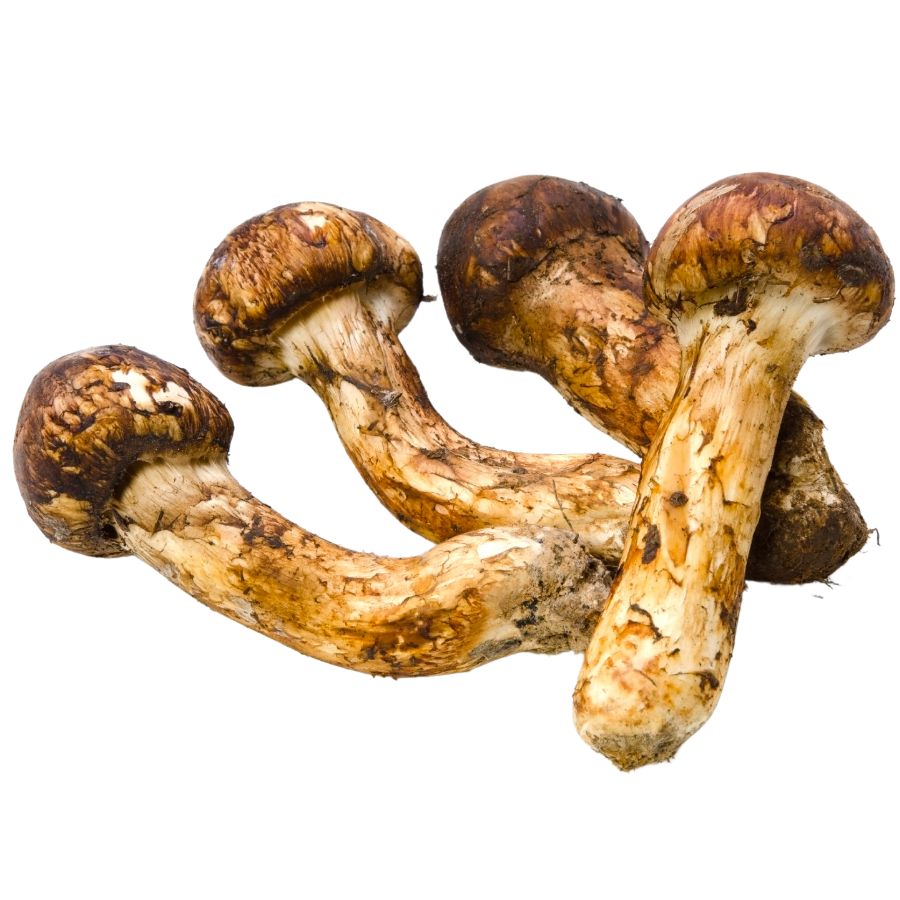
Matsutake mushrooms grow hidden under pine needles and forest debris, revealing just a small part of their white caps above ground. Their most striking feature is their unique spicy-cinnamon aroma that many describe as a mix of red hotter candy and dirty socks.
These mushrooms have thick, firm stems and white caps that develop brownish scales as they mature. The gills are white and don’t easily detach from the stem.
When foraging for Matsutake, look under pine, fir, and hemlock trees where they form relationships with the tree roots. They often create bumps in the ground called “mushrumps” before emerging.
Several look-alikes exist, including some Amanita species which can be deadly. True Matsutake always have that distinctive spicy smell and don’t have a cup-like structure at the base.
Where to Find Valuable Forageables in the State
Some parts of the state are better than others when it comes to finding valuable wild plants and mushrooms. Here are the different places where you’re most likely to have luck:
| Plant | Locations |
|---|---|
| Pinyon Pine Nuts (Pinus monophylla) | – Spring Mountains near Pahrump – Monitor Range near Belmont – Clan Alpine Mountains near Stillwater |
| Desert Truffles (Terfezia spp.) | – Amargosa Desert near Shoshone – Crescent Dunes near Tonopah – Smoke Creek Desert west of Gerlach |
| Wild Rhubarb (Rumex hymenosepalus) | – Muddy River area near Moapa – Panaca Dry Lake – Mason Valley near Yerington |
| Wild Mustard Greens (Descurainia pinnata) | – Cactus Flat near Goldfield – Reese River Valley near Austin – Palmetto Mountains west of Lida |
| Indian Ricegrass Seeds (Achnatherum hymenoides) | – Sand Mountain Dunes east of Fallon – Ruby Valley foothills – Delamar Valley south of Caliente |
| Tulip Prickly Pear Cactus (Opuntia phaeacantha) | – Red Rock Canyon outskirts – Eldorado Valley near Boulder City – Pine Creek Hills near Beatty |
| Groundnut (Apios americana) | – Carson River banks near Dayton – Humboldt River corridor near Winnemucca – Steptoe Creek near Ely |
| Sweetroot (Osmorhiza occidentalis) | – Great Basin foothills near Baker – Arc Dome Wilderness boundary – East Humboldt Range near Wells |
| Desert Wild Grapes (Vitis girdiana) | – Virgin River corridor near Bunkerville – Moapa Valley canals – Lower Walker River near Schurz |
| Fernleaf Lomatium (Lomatium dissectum) | – Snake Range canyons – Toiyabe Range above Kingston – Jarbidge Mountains trails |
| Banana Yucca Fruit (Yucca baccata) | – Ivanpah Valley – Tikaboo Valley near Alamo – Valley of Fire outskirts |
| Chokecherries (Prunus virginiana) | – Lamoille Canyon creeks – Cold Creek area near Jiggs – Silver Creek drainage near Tuscarora |
| Wild Mint (Mentha arvensis) | – Steamboat Creek near Reno – South Fork Humboldt River near Lee – Carson Slough near Crystal |
| Cauliflower Mushroom (Sparassis radicata) | – Robinson Ridge near Ely – Sierra foothills near Verdi – Highland Ridge near Ely |
| Wild Purslane (Portulaca oleracea) | – Downtown Las Vegas community gardens – Fallon irrigation ditches – Henderson backyard fields |
| Desert Almond (Prunus fasciculata) | – Ash Meadows region – Mormon Mesa near Overton – Frenchman Flat north of Mercury |
| Lion’s Mane Mushroom (Hericium erinaceus) | – Mount Charleston higher elevations – Peavine Mountain near Reno – Walker Lake canyon edges |
| Wild Ramps (Allium tricoccum) | – Wheeler Peak alpine meadows – Mount Moriah wilderness edges – Duck Creek Basin |
| Matsutake Mushroom (Tricholoma magnivelare) | – Schell Creek Range pine stands – Rubies Wilderness near Harrison Pass – Sweetwater Mountains south of Wellington |
When to Forage for Maximum Value
Every valuable wild plant or mushroom has its season. Here’s a look at the best times for harvest:
| Plants | Valuable Parts | Best Harvest Season |
|---|---|---|
| Pinyon Pine Nuts (Pinus monophylla) | Seeds (nuts) | September – October |
| Desert Truffles (Terfezia spp.) | Underground fruiting bodies (truffles) | February – April |
| Wild Rhubarb (Rumex hymenosepalus) | Roots, young stalks | April – June (stalks), September – October (roots) |
| Wild Mustard Greens (Descurainia pinnata) | Young leaves, flower buds | March – May |
| Indian Ricegrass Seeds (Achnatherum hymenoides) | Seeds | June – July |
| Tulip Prickly Pear Cactus (Opuntia phaeacantha) | Ripe fruits, young pads | May – June (pads), August – September (fruits) |
| Groundnut (Apios americana) | Tubers | September – November |
| Sweetroot (Osmorhiza occidentalis) | Roots, leaves | May – July (leaves), September – October (roots) |
| Desert Wild Grapes (Vitis girdiana) | Ripe grapes | August – September |
| Fernleaf Lomatium (Lomatium dissectum) | Roots | April – May |
| Banana Yucca Fruit (Yucca baccata) | Fruits, flower stalks | April – May (flowers), June – July (fruits) |
| Chokecherries (Prunus virginiana) | Ripe berries | July – August |
| Wild Mint (Mentha arvensis) | Leaves, flowering tops | May – August |
| Cauliflower Mushroom (Sparassis radicata) | Fruiting body | August – October |
| Wild Purslane (Portulaca oleracea) | Young leaves, stems | May – September |
| Desert Almond (Prunus fasciculata) | Seeds (after leaching) | July – August |
| Lion’s Mane Mushroom (Hericium erinaceus) | Fruiting body | September – November |
| Wild Ramps (Allium tricoccum) | Bulbs, leaves | April – May |
| Matsutake Mushroom (Tricholoma magnivelare) | Fruiting body | September – October |
One Final Disclaimer
The information provided in this article is for general informational and educational purposes only. Foraging for wild plants and mushrooms involves inherent risks. Some wild plants and mushrooms are toxic and can be easily mistaken for edible varieties.
Before ingesting anything, it should be identified with 100% certainty as edible by someone qualified and experienced in mushroom and plant identification, such as a professional mycologist or an expert forager. Misidentification can lead to serious illness or death.
All mushrooms and plants have the potential to cause severe adverse reactions in certain individuals, even death. If you are consuming foraged items, it is crucial to cook them thoroughly and properly and only eat a small portion to test for personal tolerance. Some people may have allergies or sensitivities to specific mushrooms and plants, even if they are considered safe for others.
Foraged items should always be fully cooked with proper instructions to ensure they are safe to eat. Many wild mushrooms and plants contain toxins and compounds that can be harmful if ingested.

